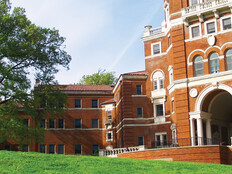Ted Rappaport, a professor and NYU Wireless founding director, led a research project in Manhattan to demonstrate the effectiveness of 5G signals in an urban campus environment. His team found that mmWaves could work even better than current wireless networks.
But rural campuses also could benefit from 5G capabilities, Rappaport says. “5G equipment could allow immediate replacement of aging copper wires with ‘wireless’ fiber. Tests done in Virginia found the distances reached by the mmWave signal were much greater than people thought — up to 10 kilometers.”
GET STARTED: Register for the EdTech Insider Program.
5G Presents Challenges and Opportunities for Legacy Networks
Although nationwide 5G coverage is still a few years away, IT leaders can start preparing now.
“Educational institutions should evaluate the opportunity to ditch legacy hard-wired networks supporting classrooms and dormitories, and the related complexity and cost,” says David Hemingson, partner and leader of the higher education and academic medical center divisions at advisory firm ISG.
It’s also time to rethink agreements with telecommunications carriers. “5G presents a new opportunity for schools to host small cells, but also new challenges, as they will have to deal with carrier requests and a new business model,” says Phil Wilson, managing director for telecommunications strategy and operations at Deloitte.
Once the logistics are sorted out, both educators and researchers will be able to explore an entirely new realm of possibility.
“We have hints of what we’ll see,” says Rappaport, pointing to applications such as virtual meetings and 3D imaging. “It could give us the ability to interact in a tactile way with remote objects with virtually no latency, even across great distances.”










